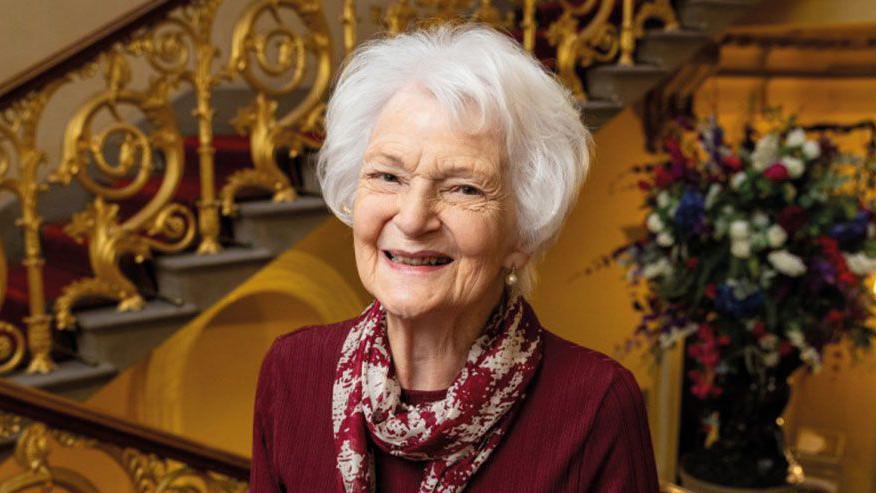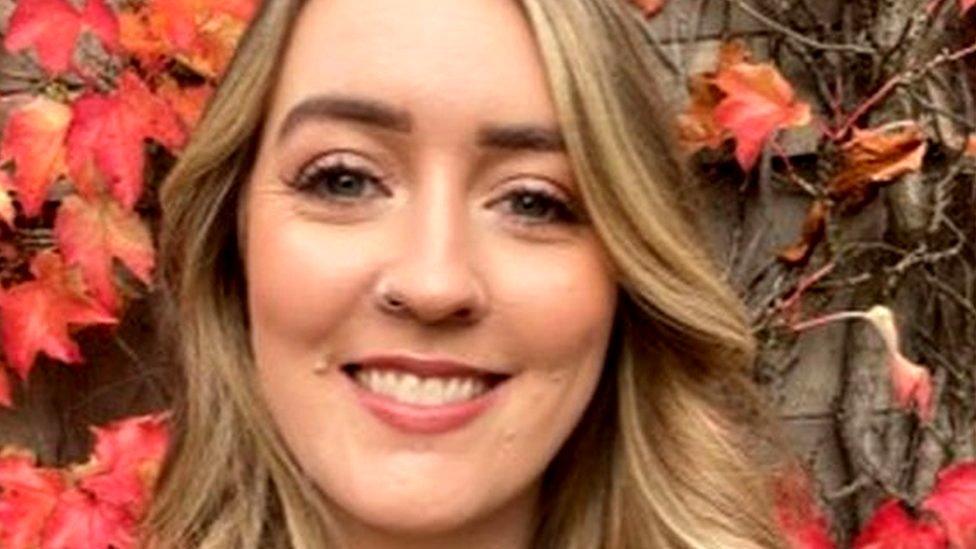The Stirling doctor who changed the lives of diabetics

Dr Sheila Reith was inspired to create the diabetic pen after helping her daughter with injections
- Published
It was a moment of inspiration in the toilets of a London train station - and it changed the lives of people with diabetes across the world.
Dr Sheila Reith was administering insulin to her daughter Fiona - a type 1 diabetic - when she wondered how she could make the injections easier.
It led to the development of insulin pens, which soon replaced syringes as the way to take the drug for millions of people.
Now Dr Reith, who worked in Glasgow and Stirling throughout her career, has been recognised with a lifetime achievement award for her contribution to medicine at the Pride of Britain ceremony.
When she moved to Glasgow from London in the 1970s, she was regularly travelling between cities with her young daughter. That's when the idea for a pen began to take shape.

The first insulin pen became available in the early 1980s
Speaking to BBC Scotland's The Nine, she recalled: "When we arrived in Euston station, Fiona would be due her insulin, so I took her to the ladies loo to give her the jab.
"I thought as I was in there that the equipment we used was incredibly primitive. You had a glass syringe with a steel needle that you sent away to get sharpened and you had to boil them up on the stove, and keep them in a flask.
"We're taking this out and drawing insulin out of a glass vial or bottle - it was pretty brutal. I thought that this was medieval, there must be a better way."
From there, she developed the idea with Dr John Ireland and Dr John Paton while working at the Southern General hospital in Glasgow in 1978.
She added: "I was working alongside John Ireland but neither of us had the skills to make a metering device so we recruited John Paton - he came up with the device that was like a biro pen, where if you pushed the button on the end you would have two units [of insulin]."
In 1981 trials of the pen began, and within two years the world’s first commercial insulin pen – Penject - was released onto the market.
It has since become a commonly used method of taking insulin, and continues to be used to this day, alongside more modern inventions such as insulin pumps.
Dr Reith said that she knew from the start the idea had "tremendous potential" to make life easier for people with diabetes.
Those with type 1 diabetes cannot produce insulin naturally, and are reliant on a number of injections each day to make up the shortfall.
'Changed the face of insulin'
Now aged 86, Dr Reith was unable to travel to this week's ceremony in London but her son Alistair collected the honour on her behalf.
In a statement she thanked her late husband David and their children for their support, and said she was "wonderfully lucky" to have worked with a number of talented colleagues.
After moving to Stirling Royal Infirmary in the 1980s she continued to work with improving diabetes care, including by developing a computer database of patients with diabetes and helping to launch a diabetes education centre which promoted multidisciplinary care for people with the condition.
She was awarded a CBE in 2023.
Dr Elizabeth Robertson, Diabetes UK’s director of research, said: “Dr Reith’s idea, and her determination to bring the insulin pen to life, changed the face of insulin therapy and diabetes care forever, benefiting too many people to count.
"Anyone who is lucky enough to meet Dr Reith cannot but be impressed by her generosity of spirit and humility for her part in this tremendous innovation."
Related topics
- Published9 May 2022

- Published30 October 2021

- Published7 April 2023
